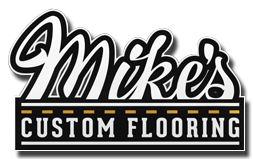Hardwood flooring is a beautiful and timeless choice for homeowners, adding warmth and elegance to any space. However, one of the most critical factors in ensuring the longevity and performance of hardwood floors is moisture control. The relationship between hardwood and moisture is a delicate one, and understanding it is crucial to maintaining your investment. Today, we at Mike’s Custom Flooring would like to elaborate the role of moisture control in hardwood flooring and how it impacts the health and appearance of your floors.
Understanding the Impact of Moisture on Hardwood Floors
Moisture is the arch-nemesis of hardwood flooring. Wood is a natural material that can absorb or release moisture based on its environment. When wood absorbs moisture, it expands, and when it loses moisture, it contracts. This constant cycle of expansion and contraction can lead to a range of issues in hardwood floors.
Effects of Excess Moisture on Hardwood Flooring
1) Warping and Cupping: Excess moisture can cause hardwood boards to warp or cup. Warping occurs when the boards bend along their length, while cupping is when the edges of the boards are higher than the center, forming a concave shape. Both issues can make your floors uneven and unattractive.
2) Buckling: In extreme cases of moisture exposure, hardwood floors can buckle, meaning they detach from the subfloor. This not only ruins the appearance of your flooring but can also be a safety hazard.
3) Mold and Mildew: Moisture trapped in or under hardwood floors can create a breeding ground for mold and mildew. These not only damage the floor but can also pose health risks to occupants.
Effects of Low Moisture on Wood Floors
1) Gapping: On the flip side, low humidity levels can cause gaps between hardwood boards. This happens when the wood loses moisture and shrinks. These gaps are not only unsightly but can also collect dirt and debris, making maintenance more challenging.
2) Cracking and Splitting: The lack of moisture can lead to the wood becoming brittle, resulting in cracks and splits in the floorboards.
Maintaining Proper Moisture Levels
To avoid these issues, it’s crucial to maintain proper moisture levels in your home. Here’s how:
1) Use a Humidifier/Dehumidifier: Depending on your climate, you may need to use a humidifier to add moisture or a dehumidifier to remove it from the air. The ideal indoor humidity level for hardwood floors is typically between 30% and 50%.
2) Monitor Moisture Levels: Invest in a moisture meter to regularly check the moisture content of your hardwood flooring. This can help you catch problems early.
3) Seal Gaps and Cracks: Proper sealing of gaps and cracks can prevent moisture from infiltrating your hardwood floors.
4) Regular Maintenance: Regular cleaning and maintenance can help ensure your floors stay in top condition. Be cautious with the amount of water used when cleaning hardwood floors, as excess water can damage the wood.
5) Consult a Professional: If you suspect moisture-related issues with your hardwood floors, it’s wise to consult a professional. They can assess the situation and recommend appropriate solutions.
Hardwood Floor Installation, Repairs, Refinishing & More in Charles Town & Eastern Panhandle of Berkeley & Jefferson Counties in WV | Winchester & Frederick County | Round Hill & Loudoun County | Berryville & Clarke County | Herndon & Fairfax County VA
The role of moisture control in hardwood flooring cannot be overstated. It is the key to preserving the beauty and integrity of your floors. Whether you’re installing new hardwood floors or maintaining existing ones, understanding how moisture impacts your flooring is essential for long-lasting, elegant, and functional hardwood floors in your home. Proper care and attention to moisture control will ensure that your investment in hardwood flooring remains a source of pride for years to come. Call Mike’s Custom Flooring for your hardwood floor service needs.





